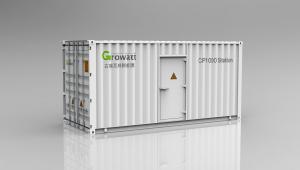Solar Farm Inverter Station
Solar Farm Inverter Station Related Searches
Plastic Netting For Gardens Solar Farm Inverter Station Plastic Wire Netting Geomembrana Pvc Pvc Ceilings Kroonstad Pvc Crimp Coatedwire Spotlights On Wire Track Garden Plastic Netting Green Plastic Netting Clear Plastic NettingHot Searches
Geomembrane For Sale China Pvc Geomembrane Hdpe Geomembrane Sheet Price Fish Tank Air Pump Price Hdpe Geomembrane China China Geomembrane Geomembrane China Hdpe Geomembrane Price Geomembrane Liner Price Geomembrane Price Wholesale Hdpe Geomembrane Roll Geomembrane Factory Wholesale Liner Hdpe Geomembrane Wholesale Geomembrane Hdpe Wholesale Hdpe Geomembrane Geomembrane Market Size Wholesale Hdpe Geomembrana Wholesale Liner Geomembrane Geomembrane Liner Supplier Type Of Inverter For SolarSolar Farm Inverter Station Supplier & Manufacturer from China
Okorder.com is a professional Solar Farm Inverter Station supplier & manufacturer, offers integrated one-stop services including real-time quoting and online cargo tracking. We are funded by CNBM Group, a Fortune 500 enterprise and the largest Solar Farm Inverter Station firm in China.Hot Products
FAQ
- Yes, a solar inverter can be controlled remotely. With the help of advanced monitoring systems and communication technologies, users can remotely access and control their solar inverters. This allows for convenient monitoring of power generation, performance optimization, and troubleshooting from any location with internet connectivity.
- Yes, a solar inverter can be used with solar-powered data centers. In fact, solar inverters are essential components in solar power systems as they convert the direct current (DC) generated by the solar panels into alternating current (AC) which is then used to power the data center's equipment. The solar inverter ensures efficient and reliable utilization of solar energy in data centers.
- The role of a solar inverter in preventing electrical hazards is to convert the direct current (DC) electricity produced by solar panels into alternating current (AC) electricity that can be safely used in homes or businesses. It ensures that the electrical output from the solar panels is compatible with the electrical grid, reducing the risk of overloading or short circuits that can lead to electrical hazards such as fires or electrocution. Additionally, solar inverters have built-in safety features like ground fault protection and rapid shutdown mechanisms, which further minimize the chances of electrical accidents.
- Yes, a solar inverter can be used with a smart home system. Smart home systems are designed to integrate with various devices and technologies, including solar inverters. By connecting a solar inverter to a smart home system, users can monitor and control their solar energy production, track energy consumption, and optimize energy usage based on real-time data. This integration allows for increased energy efficiency and convenience in managing solar power within a smart home environment.
- Yes, a solar inverter can be used in a solar-powered desalination system. A solar inverter is responsible for converting the direct current (DC) electricity generated by solar panels into alternating current (AC) electricity, which is required for the operation of the desalination system. By utilizing a solar inverter, the system can effectively harness solar energy and convert it into usable power for the desalination process.
- Yes, there are government incentives for installing solar inverters. In many countries, governments offer tax credits, rebates, grants, and other financial incentives to promote the adoption of renewable energy technologies, including solar inverters. These incentives aim to reduce the upfront costs of installation and make solar energy more affordable and accessible to individuals and businesses.
- Yes, a solar inverter can be used with a solar-powered cooling system. The solar inverter is responsible for converting the direct current (DC) power generated by the solar panels into alternating current (AC) power, which is required to operate the cooling system. By connecting the solar panels to the inverter, the generated solar energy can be efficiently utilized to power the cooling system, making it a sustainable and eco-friendly solution.
- Grid support or anti-islanding function is the process by which a solar inverter manages voltage and frequency variations resulting from grid faults. It promptly detects disturbances, such as sudden drops or spikes in voltage or frequency, and responds accordingly. To address voltage variations, the solar inverter incorporates a voltage control mechanism. It continuously monitors the grid voltage and adjusts its own output voltage to match the grid level. In the event of a voltage drop or spike due to a grid fault, the inverter adjusts its output voltage to maintain a stable and secure operating condition. This safeguards both the solar system and the grid from potential harm. Similarly, the solar inverter handles frequency variations caused by grid faults. It constantly monitors the grid frequency and adjusts its own output frequency to align with the grid. If a grid fault results in a sudden frequency change, the inverter responds by adjusting its own frequency. This ensures the solar system remains synchronized with the grid and continues to provide uninterrupted power supply. Furthermore, solar inverters are equipped with anti-islanding protection. This feature enables them to quickly disconnect from the grid in the event of a grid fault. This safety measure prevents the solar system from supplying power to a faulty grid, thus minimizing risks to utility workers during repair. In summary, the solar inverter's capacity to handle voltage and frequency variations caused by grid faults is vital for the efficient and safe operation of a solar power system. By continuously monitoring and adjusting its output to match grid conditions, the inverter guarantees a stable and reliable power supply while keeping the solar system in sync with the grid.















































